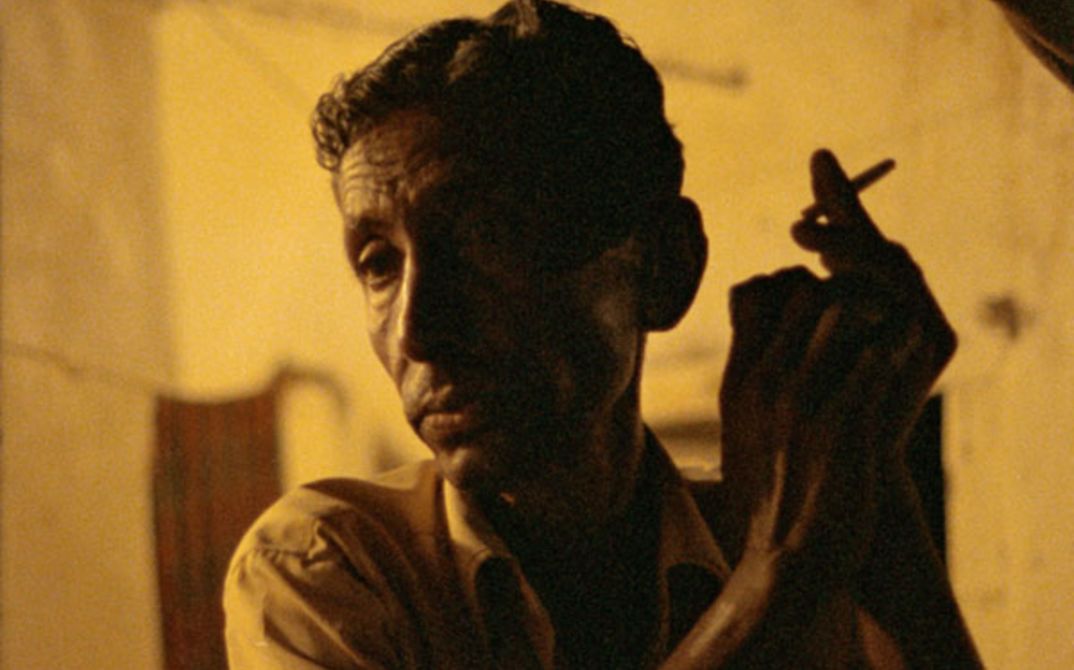What is missing though are the films Deepa Dhanraj made as part of the film collective Yuganthar, which was founded in 1980: MOLKARIN (Maid Servant) (1981), TAMBAKU CHAAKILA OOB ALI (1982), SUDESHA (1983) and IDHI KATHA MATRAMENA (Is this just a story?) (1983). Again, these are films that I have heard a lot about and that I was always eager to see. Accounts by Deepa Dhanraj about the making of those films, the political climate they were made in, their collaborative nature, their processes of examining film and feminist politics, the kind of audiences they attracted and the public discussions they engendered, the fact that they recalled Third Cinema practices and yet were specific and most of all entrenched in a quest for feminist film/politics. Again, these are films whose reintroduction is of film historical and political importance but the state of the film material itself does not currently allow them to be screened.
My project for Living Archive is thus currently twofold and tests out the various directions these potent films seem to evoke and my conversations with the filmmaker Deepa Dhanraj.
Bringing KYA HUA IS SHAHAR KO? into a format for screening (in India and elsewhere) and into a discursive context: What screening scenario can be thought of to initiate a wider discussion on its representational politics and its contemporary pertinence? What relevance and place do the evocative screening scenarios practiced then have now, within the current media context? How does the film stand next to and with current urgencies? Restoring and digitizing the Yuganthar film collective films and finding forms to embed and circulate them. As mentioned above, the specifics of how these films, their making and their screening and distribution was developed, appears to be a rich contribution to the current renewed interest in revolutionary filmmaking from a particular feminist perspective, and at the same time demands for careful thinking about how these works should be actualized today.
Current state of research project:
- A 16mm copy of KYA HUA IS SHAHAR KO? is available with German subtitles and possibilities for digitizing the print are being looked into.
- 16mm copies of TAMBAKU CHAAKILA OOB ALI, SUDESHA, IDHI KATHA MATRAMENA have been located by the filmmaker Deepa Dhanraj and are now in Berlin to be inspected and they will hopefully be digitized during the summer of 2012. A copy of MOLKARIN (1981) might follow.
- Discussions with Deepa Dhanraj have started about a possible DVD compilation of these films. More research will be conducted that might lead to accompanying text material, conversations with the filmmakers, with the camera person Navroze Contractor, with women’s groups and other political groups which showed the films. How can the memories of these filmic and political events be unearthed in productive ways? What did they mean then and what do they mean today for different people, different generations, within the current media and political scenario? Could this research lead into a short collaborative film project?
- Further archival research is planned for the summer of 2012: What could be fruitful references across the archive with the aim to link to localities outside India that share sensibilities, queries and urgencies regarding film and politics? Can cinematic and feminist affiliations be outlined? Which other collaborative film projects and/or feminist collectives have forged political vocabularies? Which other portrayals of ‘living under curfew’ could create moving image friendships?
Possible results:
DVD compilation with small publication and possibly a short film. Finding forms for the presentation and discussion of the above films and their possible affiliations, in Berlin as part of Living Archive, as well as in India.
Short film synopses
MOLKARIN (Maid Servant), India 1981, 25 min, 16mm
The film exposes the oppressive working conditions of hundreds of maidservants in Pune and reveals how the women came together to form an organization to fight for their rights.
TAMBAKU CHAAKILA OOB ALI, India 1982, 25 min, 16 mm
The film traces the history of the all women trade union of over 3000 tobacco workers in Nipani, Karnataka and was made in collaboration with female tobacco workers.
SUDESHA, India 1983, 30min, 16mm
A portrait of Sudesha, a woman who is a village activist in the Chipko Forest Conservation Movement in the foothills of the Himalayas.
IDHI KATHA MATRAMENA (Is this just a story?), India 1983, 25 min, 16mm
A fictional reconstruction of domestic violence, seen from the woman's point of view. Collaboration with women’s group Sree Shakti Sanghatana.
KYA HUA IS SHAHAR KO? (What happened to this city?), India 1986, 95 min, 16mm
Deepa Dhanraj, co-directed with Navroze Contractor & Keshav Rao Jadhav. How do the citizens of Hyderabad experience the escalation of Hindu-Muslim riots and the subsequent curfew, which takes over the city? What happened to this city follows the rise of fundamentalist organisation and speech and its use of moments of economic crises, unemployment and a wide spread insecurity in a disintegrating city, which ultimately leads to a state of emergency in 1984. While capturing a very crucial historical moment, the film succeeds in combining a participant, observant and poetic approach and hereby presents an astonishing alternative to the argumentative political documentaries more widely made in response to communal politics in the 1990s.
In the framework of Living Archive KYA HUA IS SHAHAR KO? could be released on DVD



